Johnson’s Cutoff
About 1846, mail carrier John Calhoun Johnson sought a route other than the dangerous Truckee River passage to the Sacramento Valley over the Sierra Nevada. Designated “Johnson's Cutoff,” the course flanked what would become Lake Tahoe and led into Placerville, California. This route was later utilized by the Pony Express in 1860 -1861. Today, Johnson’s Cutoff is essentially the route of Highway 50.
Johnson would establish “Six Mile Ranch,” better known as “Johnson's Ranch", near today’s Camino, California. The Ranch steadily became a popular destination for immigrants. There are numerous accounts of hundreds who camped on the property. According to some records, as many as 1000 were camped on the 320-acre ranch at one time. During the Indian Wars of the California Gold Rush period, Johnson’s Ranch was the temporary encampment to over 800 militiamen entrusted with the job of guarding the foothill communities against Indian invasion.
Gallery
| Click on any image for a larger version. |
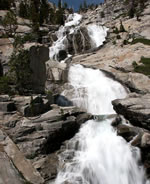 |
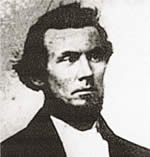 |
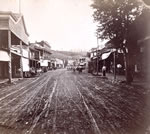 |
| Along the California Trail – Horsetail Falls along Johnson’s Cutoff. |
John Calhoun Johnson, the founder of the Johnson’s cutoff spur of the California Trail. |
Placerville, California, was the community at the end of Johnson’s Cutoff. This is Placerville in the 1860s. |
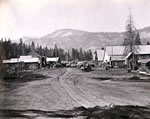 |
 |
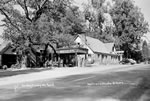 |
| Near Lake Tahoe, Yank’s Station was a trading post along Johnson’s Cutoff. Today the community is called Meyers. |
Kyburz, California, in the wintertime, along Johnson’s Cutoff. |
Pacific House, California, along Johnson’s Cutoff. Pacific House became a well-known resting stop along the trail. The hotel housed many famous people, including Mark Twain. |
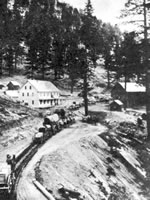 |
 |
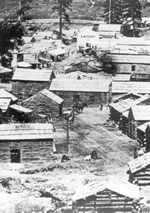 |
| Kyburz, in the Sierra Nevada, was also on the Pony Express route in California. |
Placerville, California, was the community at the end of Johnson’s Cutoff. Placerville was known as “Hangtown” during its early days. |
Placerville, California, was the community at the end of Johnson’s Cutoff. This is Placerville in the 1870s. |
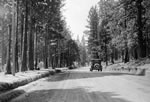 |
 |
 |
| Johnson’s Cutoff eventually became US Highway 50. This is what the road looked like in 1924. |
Strawberry Lodge was a favorite stopping place along Johnson’s Cutoff. This is what the lodge looked like in the 1930s. |
Sportsmans Hall in Pollock Pines, California, was a station along the Pony Express route. This is how the building looks today. |
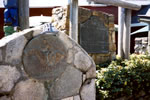 |
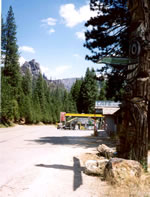 |
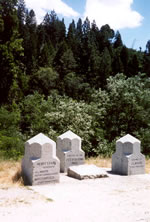 |
| Pony Express Trail markers at Sportsmans Hall in Pollock Pines, California. |
Silver Fork was a favorite stopping place along Johnson’s Cutoff. This is what Silver Fork looks like today. |
Riverton marked a crossing of the American River along Johnson’s Cutoff. This is all that remains of Riverton today. |
| Credits: SNVM staff; Pony Express National Museum, St. Joseph, Missouri; Collections of the Bancroft Library, University of California, Berkeley; the Eastman Collection of the University of California, Davis; National Archives, Washington D.C.; National Park Service, Washington, D.C.; Online Archive of California; Oregon-California Trails Association |















